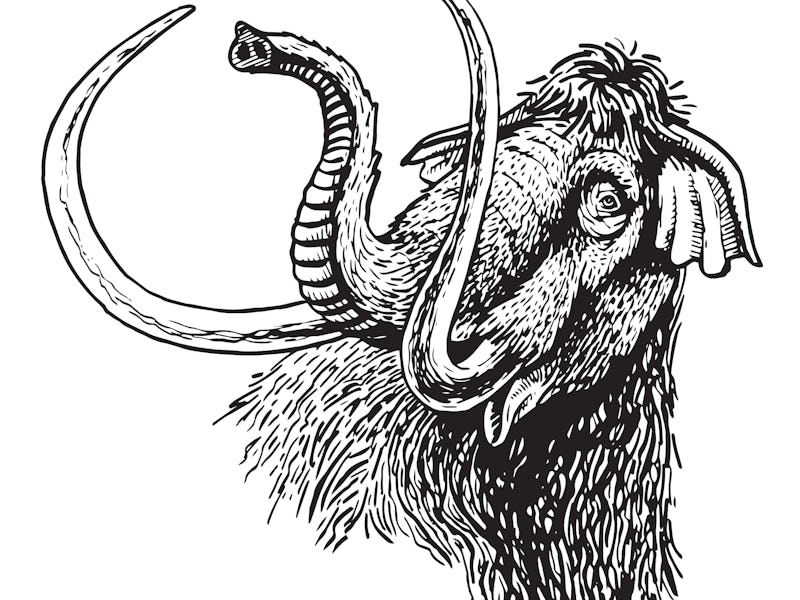One iconic, extinct animal could return to Earth
Plus: The answer to an eternal question about cats

We have new stories about the things that make your heart flutter, the return of an iconic, extinct creature, a conversation with the director of the Netflix documentary about the Inspiration4 mission, and the answer to an eternal question about cats.
Stay tuned for a special fall edition on Wednesday, and be sure to open the Tuesday edition of Inverse Daily for the debut of a new reader survey!
Mark your calendars — The fall season begins at 3:20 p.m. this coming Wednesday with the autumnal equinox. Embrace the roughly equal amounts of night and day appropriately.
I’m Nick Lucchesi, and this is Inverse Daily. Please share this science & innovation newsletter with a friend by sending them this link.
This is an adapted version of the Inverse Daily newsletter for Monday, September 20, 2021. Subscribe for free and earn rewards for reading every day in your inbox. ✉️
An unexpected link between stories and a vital organ — Katie MacBride explores a new study that suggests our heart rates respond to cognitive processing:
Writers, filmmakers, and playwrights have long known the power of a good story. Whether we’re laughing and crying with strangers in a theater, or debating theories of whodunit in the psychological thriller you’re both reading, stories have always brought humans together.
When we think about how stories connect us, we tend to think about shared emotional experiences—the feelings the stories elicit in us. A new study suggests that stories connect us in an unconscious way as well.
The more you know:
- Early aging and more: 5 ways alcohol harms health
- 7 foods scientifically proven to boost heart health
- Scientists discover an unexpected connection between gut and heart health
Woolly mammoths will walk the Earth again — Sarah Wells reports on a new biotechnology company, Colossal, that wants to bring back the mammoth in just six years. But moving this quickly could have more consequences than benefits:
On September 13, entrepreneur Ben Lamm and Harvard geneticist George Church announced the creation of Colossal, a new gene-editing company bent on “de-extincting” the woolly using CRISPR. The company claims that rewilding of this species in the Arctic tundra could revitalize the region's grasslands as a major source of carbon sequestration, which offers a crucial tool in the fight against climate change.
With starting capital of $15 million and four-to-six years of research, Lamm tells Inverse the company could produce a “herd” of woolly mammoths calves for the first time since the Ice Age. This means the first baby mammoths could roam the tundra by 2027 or earlier.
Go deeper:
- Oldest ever DNA discovery reveals a new type of woolly mammoth
- Look: Ancient tusk gives an unprecedented glance into lives of arctic beasts
How sports shaped the Inspiration4 Netflix doc — The director of the Netflix documentary explains to Mike Brown how he brought the moment to a mainstream audience:
Jason Hehir is the director of Countdown: Inspiration4 Mission to Space, the five-part Netflix documentary that chronicles the mission that’s now underway.
“My brain is all over the place,” he told us earlier this month as he put the finishing touches on the first two episodes. “It’s around the clock at this point.”
Go deeper:
- SpaceX’s groundbreaking Inspiration4 hits Netflix (and soon, space)
- Inspiration4 mission reveals an unexpected purpose for SpaceX Crew Dragon
- Inspiration4: What the crew’s interactions with Elon Musk reveal about SpaceX
Does my cat want to be left alone? — Tara Yarlagadda asks pet experts to weigh in on an eternal question:
Inverse spoke with three pet experts to answer the question gnawing at the back of many pet owners’ minds: does my cat want to be left alone? The question speaks to a deeper fear: Do our cats really love us as much or need us as much as we need them?
As it turns out, your cats might not need as much alone time as you think, and they may value your company in ways you don’t fully appreciate.
More on the science of cats:
- One type of cat breed looks so “silky” for a genetic reason — study
- Is it OK to let your cat sleep in your bed? Why the science is complicated
- Why does my cat knead with its paws? A vet explains
That’s all for this Monday edition. Come back tomorrow for a slew of new stories and a great new feature.
- About the newsletter: Do you think it can be improved? Have a story idea? Want to share a story about the time you met an astronaut? Send those thoughts and more to newsletter@inverse.com.
- A technical note — To ensure your email open is counted toward our streak program, confirm that all the images have loaded and your ad blocker is turned off.